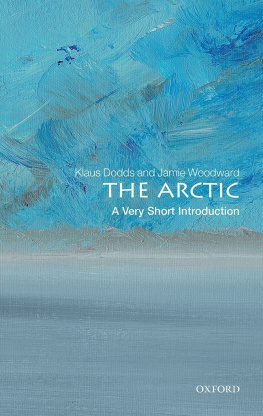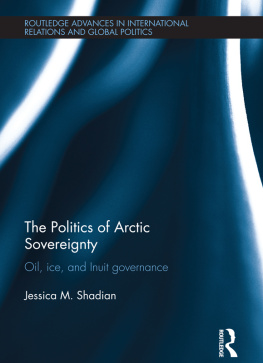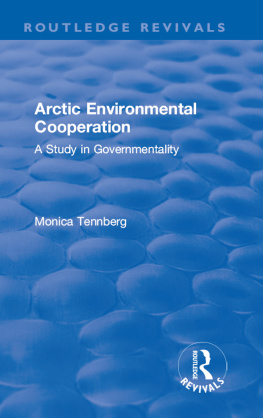Contents
Landmarks

Svein Vigeland Rottem
The Arctic Council Between Environmental Protection and Geopolitics
Svein Vigeland Rottem
Fridtjof Nansen Institute, Lysaker, Norway
ISBN 978-981-13-9289-4 e-ISBN 978-981-13-9290-0
https://doi.org/10.1007/978-981-13-9290-0
The Editor(s) (if applicable) and The Author(s), under exclusive license to Springer Nature Singapore Pte Ltd. 2020
This work is subject to copyright. All rights are solely and exclusively licensed by the Publisher, whether the whole or part of the material is concerned, specifically the rights of translation, reprinting, reuse of illustrations, recitation, broadcasting, reproduction on microfilms or in any other physical way, and transmission or information storage and retrieval, electronic adaptation, computer software, or by similar or dissimilar methodology now known or hereafter developed.
The use of general descriptive names, registered names, trademarks, service marks, etc. in this publication does not imply, even in the absence of a specific statement, that such names are exempt from the relevant protective laws and regulations and therefore free for general use.
The publisher, the authors and the editors are safe to assume that the advice and information in this book are believed to be true and accurate at the date of publication. Neither the publisher nor the authors or the editors give a warranty, express or implied, with respect to the material contained herein or for any errors or omissions that may have been made. The publisher remains neutral with regard to jurisdictional claims in published maps and institutional affiliations.
Cover illustration: Pattern Melisa Hasan
This Palgrave Pivot imprint is published by the registered company Springer Nature Singapore Pte Ltd.
The registered company address is: 152 Beach Road, #21-01/04 Gateway East, Singapore 189721, Singapore
Contents
The Author(s) 2020
Svein Vigeland Rottem The Arctic Council https://doi.org/10.1007/978-981-13-9290-0_1
1. The Arctic Council: From Environmental Protection to Geopolitics
Svein Vigeland Rottem
(1)
Fridtjof Nansen Institute, Lysaker, Norway
Svein Vigeland Rottem
Email:
Abstract
This chapter introduces the topic and the structure of the book and outlines to the history of the Arctic Council, starting from a limited effort to promote cooperation on environmental policy to becoming the most important international forum for discussions on a wide range of Arctic issues. It also portrays the political and geographical landscape the Arctic Council operates in.
Keywords
Arctic Council Climate change Conflict Cooperation
In consequence of a changing climate, the Arctic has once again secured a place on the international agenda. It is in the Arctic global climate change is most conspicuous. Higher temperatures and diminishing ice cover are affecting the basic conditions for actors with interests in the region. Technological progress has also made it possible to extract resources in areas that were previously inaccessible.
Commercial activity is increasing and each of the Arctic states wants to take part in shaping the new Arctic. In parallel, a number of non-Arctic states also have aspirations for the region. The agenda varies from research to geopolitics, but that something is happening in the Arctic that needs careful monitoring is becoming clear to increasing numbers.
Although interest in the region is growing, it is still characterised by political stability and well-functioning governance regimes. Among the Arctic states, there is consensus on the basic rules. That is not to deny the existence of different approaches to what a future Arctic should look like, from ideas of total protection to expansive oil and gas extraction. The Arctics position on the political agenda also varies among the Arctic coastal states, from Norways High North hype to a more peripheral place in the foreign policy of the US.
It is in this political and geographical landscape the Arctic Council operates. All the Arctic states describe the Council as the most important international forum for dialogue and cooperation on Arctic challenges and opportunities, and as a significant arena for developing knowledge and learning about a changing region. Despite portrayals like these in addresses to the public and official political documents, knowledge of the forum is actually in short supply. In a survey conducted in 2015, in which residents from all the Arctic states participated, fewer than half were aware of the Arctic Council.
The book is divided into five chapters. Chapter ), I recapitulate the main argument in this book and ask why we have an Arctic Council in the first place. By then, I hope the reader will have gained some understanding of the Arctic Council.
Throughout the Cold War , the characteristic feature of the Arctic was the military and strategic rivalry between the US and the Soviet Union. The Cold War stifled opportunities for collaboration in the region. The Arctic was a place for security policy and strategic assessments. All aspects of politics in the north were seen in light of this tense but essentially stable situation. In the 1980s, the thaw got under way. In his celebrated Murmansk speech of 1987, Mikhail Gorbachev was eager to transform the Arctic into a zone of peace and the North Pole into a pole of peace. for example. Now, though, all eight Arctic states could get together to discuss broader issues, not just narrowly defined fields.
In parallel with this development , environmental policy had climbed up the international agenda. The 1972 Stockholm Conference is often regarded as the start of international environmental politics. It resulted in, among other things, several international environmental agreements on, for example, conservation of endangered species. During the 1970s, several treaties aimed at combating pollution were signed. In the 1980s, fighting pollution became a global policy. a term that subsequently would play an important role in the debate on developments in the Arctic.
This positive atmosphere gave Finland the impetus in January 1989 to invite the Arctic states to come together to discuss the protection of the Arctic environment, under the aegis of the so-called Rovaniemi process.
Alongside the rollout of the Finnish initiative, Canada was pushing an idea for an Arctic Council. The indigenous voice was particularly important. Not overwhelmingly effusive, in other words.
Procedures and rules were adopted at the first meetings. It was decided, among other things, to let the chairmanship rotate every other year among the eight member states and that all decisions should be taken unanimously. The role of observers and the status of indigenous peoples as permanent participants became clearer as well. The permanent participants have full consultation rights in connection with the Councils negotiations and decisions, but not voting rights. The indigenous groups that constituted the permanent participants stand for quite different interests and face different challenges. Nevertheless, in the Councils infancy, it was important to anchor the work in a traditional Arctic identity. Mary Simon in particular, then president of the Inuit Circumpolar Conference , was at the heart of setting up the Arctic Council.













